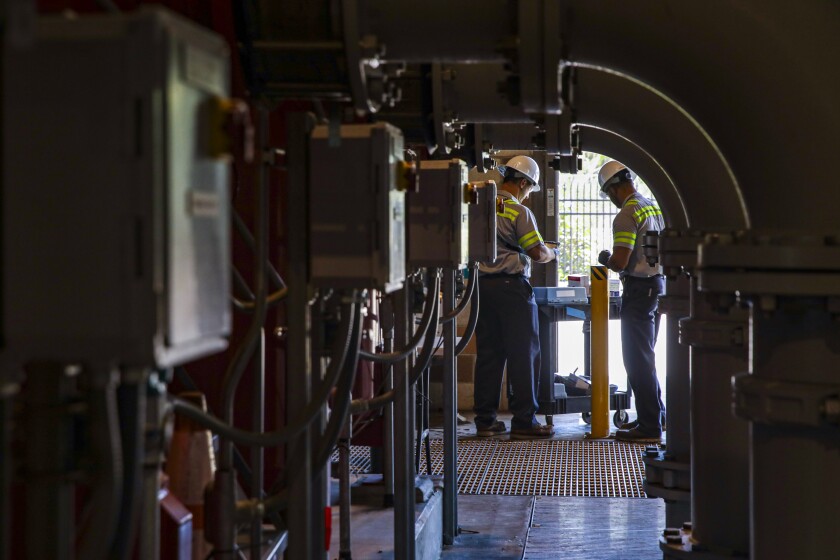
(Irfan Khan / Los Angeles Times)
BY JAIMIE DINGS, STAFF WRITER, Los Angeles Times
Water has always been recycled. The water molecules in your shower or cup of coffee might just be the same molecules that rained on dinosaurs more than 65 million years ago.
With the technological advancements in water recycling, however, the water that went down your sink this morning might be back in your tap sooner than you think.
The city of Los Angeles and agencies across Southern California are looking into what’s known as “direct potable reuse,” which means putting purified recycled water directly back into our drinking water systems. This differs from indirect potable reuse, where water spends time in a substantial environmental barrier such as an underground aquifer or in a reservoir.
Water recycling experts shudder at the infamous phrase “toilet to tap,” an alliteration that became popular with politicians and headline writers alike in the late 1990s when projects for using recycled water for groundwater replenishment were beginning to take shape in the San Gabriel Valley and city of Los Angeles.
Miller Brewing Co. and community groups vigorously opposed the San Gabriel Valley project, even suing agencies involved over the environmental impact reports.
Today, recurring cycles of devastating drought as well as advancements in science have softened that view.
“There’s been a public health legacy where sanitary engineering practices and regulators considered sewage a waste, it was something to be avoided, something to be feared,” said Brad Coffey of the Metropolitan Water District of Southern California. “Now that we have the technology … the public, the regulators, and the scientific community– have much greater confidence in our ability to safely reuse that water supply.”
Their efforts hinge on the State Water Resources Control Board, which has been tasked by legislators to develop a set of uniform regulations on direct potable reuse by Dec. 31, 2023.
The city of Los Angeles is wasting no time in readying projects that can launch once the regulations are passed.

A direct potable reuse demonstration facility near the Headworks reservoir just north of Griffith Park probably will be the state’s first approved direct potable reuse project, said Jesus Gonzalez, manager of water recycling policy at the Los Angeles Department of Water and Power. It will take advantage of recycled water produced by a facility in Glendale, but the water will not be added to the drinking water system just yet. However, it will serve as proof of concept, he said.
“This is going to be the future of L.A.’s water, the future of the state’s water supply,” Gonzalez said.
The Headworks project is scheduled to come online soon after the regulations are in place — tentatively within the next five years, Gonzalez said.

But the Headworks project is just one part of the city’s ambitious plan to recycle 100% of its wastewater by 2035 — a pledge Mayor Eric Garcetti made several years ago.
If you liked this post you’ll love our daily environmental newsletter, EnviroPolitics. It’s packed with the latest news, commentary, and legislative updates from New Jersey, Pennsylvania, New York, Delaware…and beyond. Don’t take our word for it, try it free for an entire month. No obligation.


